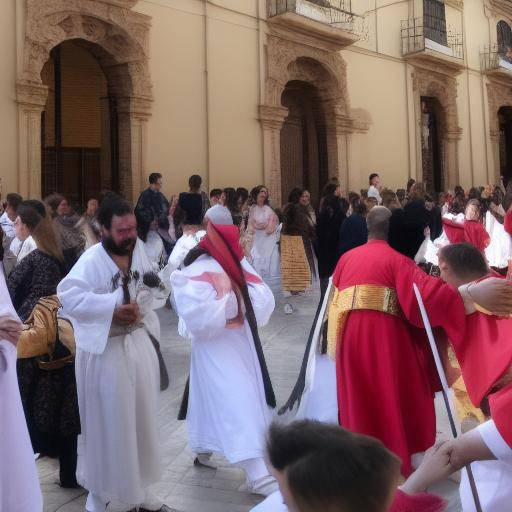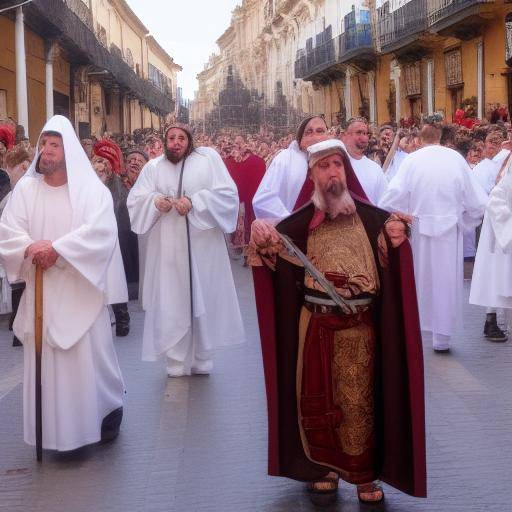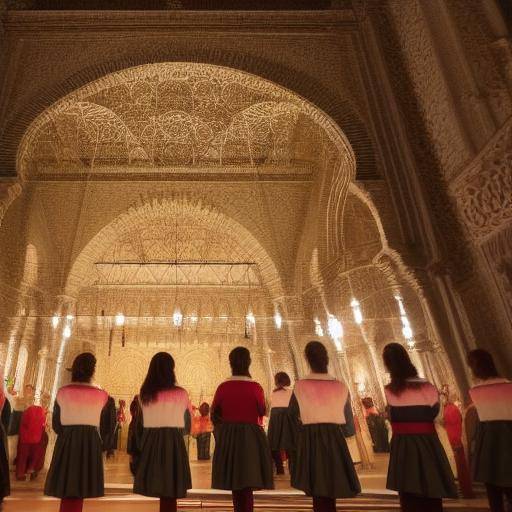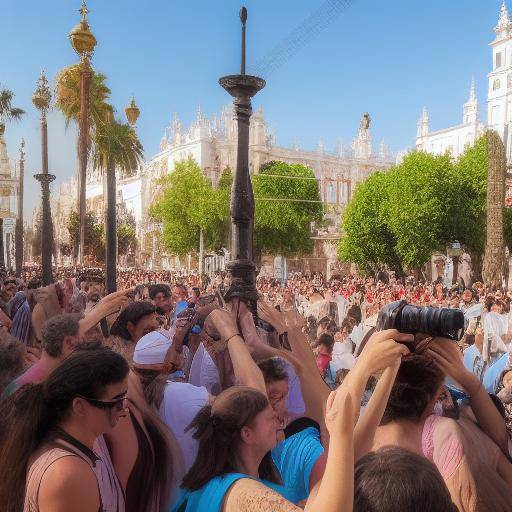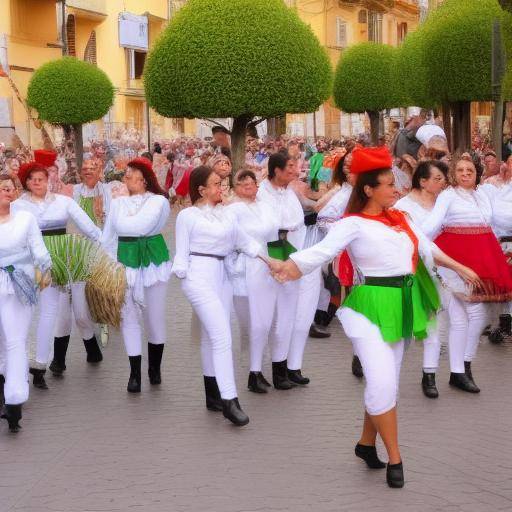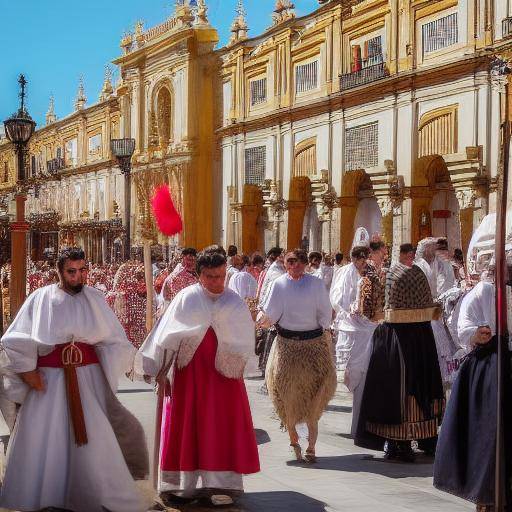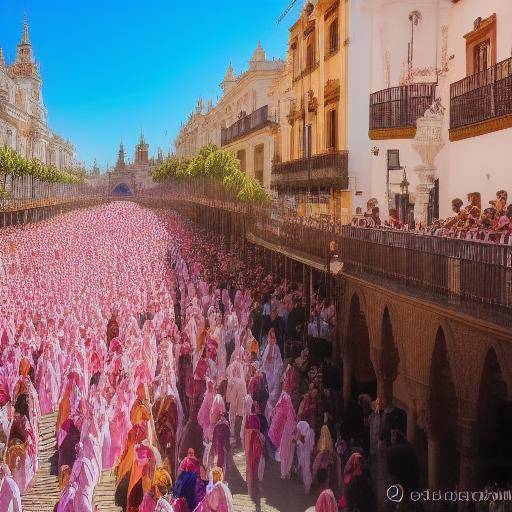
Easter in Seville is a unique celebration that attracts thousands of visitors every year. Its processions, traditions and religious fervor make it a cultural event of great importance in Spain. In this article, we will explore the history and meaning of Holy Week, as well as the specific traditions that make Seville the epicenter of this festival. We will also offer practical advice on how to maximize this unique experience.
Introduction
Holy Week is a religious celebration that commemorates the passion, death and resurrection of Jesus Christ and is celebrated throughout the world. However, in Spain, and especially in Seville, this holiday acquires a special dimension. During this week, the streets of the city are filled with processions in which the sisterhoods take steps with sculptures that represent scenes of the Passion. The atmosphere is impregnated with a unique fervor, with the sound of drums and arrows resonating in the air.
In this article, we invite you to immerse yourself in the magic of Easter in Seville. You will discover the rich history and traditions that make this celebration an unforgettable experience. We will also provide you with tips on how to enjoy the most of this unique event.
History and Background
Holy Week has its roots in the Christian celebration of Easter, which commemorates the crucifixion and resurrection of Jesus Christ. The tradition of celebrating Holy Week with public processions and representations of the Passion dates back to the sixteenth century in Spain. However, in Seville, this tradition has been rooted in a unique way, becoming one of the purest and most profound expressions of popular religiosity.
For centuries, the brotherhoods and brotherhoods of Seville have played a central role in organizing the Holy Week processions. These religious entities, composed of faithful who share devotion for a sacred image, are responsible for the preparation and realization of the processions, as well as other charitable and religious activities.
Holy Week processions often include steps that represent scenes of the Passion of Christ, which are carried on walks by the members of the Sisters. The steps are escorted by Nazarenes, who wear robes and capirotes of colors characteristic of each brotherhood. The solemn and exciting atmosphere surrounding these processions attracts visitors from around the world, making Seville an emblematic destination during Holy Week.
Analysis in Deep
The Holy Week in Seville is a celebration of great cultural, social and religious relevance. However, it also poses challenges and disputes. On the one hand, devotion and tradition rooted in the city generate a sense of identity and belonging between the Sevillians. On the other hand, the magnitude of the celebrations and the impact on the everyday life of the city raises debates on its sustainability and the balance between tradition and tourism.
One of the current trends is the effort to preserve and promote the authentic traditions of Holy Week, while seeking to modernize and adapt the celebration to contemporary demands. For example, there has been a growing interest in the participation of young people in sisterhoods, as well as in the use of technology for the dissemination and organization of processions.
Comprehensive review
Easter in Seville is not limited to processions; it also offers a myriad of cultural, gastronomic and artistic experiences. The city becomes a scene of frenetic activity, with concerts, exhibitions and events that complement religious experience with manifestations of art and culture.
One of the most entrenched practices during Holy Week is the consumption of typical dishes, such as torrijas, chickpeas potage and fried fish.
Comparative analysis
Compare Holy Week in Seville with other similar celebrations in Spain and the world reveals significant similarities and differences. While in other regions the Holy Week focuses on religious activities, in Seville it also acquires a festive and social character that attracts visitors from various backgrounds.
Popular devotion in Seville is manifested in a unique way through the elaboration of the procedural steps, the sacred music and the active participation of the community in the celebrations. This combination of elements gives the Sevillian Holy Week a uniqueness that distinguishes it from other religious festivities globally.
Practical Tips and Recommendations
If you plan to visit Seville during Easter, we recommend that you take into account the following tips to fully enjoy this unique experience:
- Plan your visit in advance. Special processions and events take place on specific dates, so it is important to know about the procession program and routes.
- It respects local traditions. During Holy Week, Seville immerses itself in a solemn and devoted atmosphere. It is essential to show respect for religious manifestations and traditional practices.
- Enjoy local gastronomy. Take the opportunity to taste the typical dishes of Easter and discover the rich culinary offer of the city.
- Take part with an open attitude. Holy Week is an intense and moving experience. Allow yourself to immerse yourself in your atmosphere and participate in celebrations with open mind and heart.
Industry Perspectives and Expert Reviews
Recognized experts in anthropology, sacred art and religious tourism have highlighted the importance of the Holy Week of Seville as a manifestation of popular religiosity and as a cultural phenomenon of international relevance. Its impact on tourism and the projection of the city globally has been the subject of analysis and reflection by academics and professionals in the sector.
The Sevillian Holy Week will continue to attract the attention of researchers and specialists in religious tourism, who seek to understand and promote the cultural and spiritual value of this celebration through conservation and dissemination initiatives.
Case Studies and Practical Applications
The impact of Holy Week on the local economy, tourism and the international projection of Seville has been the subject of numerous studies and analysis. The way religious celebrations integrate with the everyday life of the city and generate opportunities for the tourist and cultural industry has aroused the interest of urban researchers and planners.
Case studies show how Holy Week contributes to the revitalization of historic neighbourhoods, the promotion of local trade and the creation of employment in sectors related to tourism and crafts. This positive impact is reflected in the dynamization of the economy and the promotion of Sevillian identity at the national and international levels.
Future Trends and Predictions
As the Holy Week evolves and adapts to the changing demands of society, promising trends are seen in terms of sustainability, inclusion and promotion of cultural and religious heritage. Efforts to preserve authentic traditions and to promote a contemporary interpretation of Holy Week are expected to contribute to their durability and relevance in the future.
The integration of new technologies, such as mobile applications for the management of processions or the multimedia diffusion of celebrations, signals a direction towards modernization without losing the essence and profound meaning of this holiday.
Conclusion
Holy Week in Seville is much more than a religious celebration; it is a cultural, social and spiritual experience that transcends borders and connects people from around the world. Its rich history, rooted traditions and emotional environment make it a unique celebration that deserves to be lived in its fullness.
From the devotion of the Sisters to the emotion of the processions, the Holy Week in Seville offers an exceptional opportunity to immerse itself in the very essence of popular religiosity. By enjoying its traditions, its gastronomy and its unique atmosphere, visitors can appreciate the deep connection between faith, culture and the community that defines this celebration.
Frequently asked questions
1. When is Holy Week celebrated in Seville?
Holy Week is celebrated the week before Resurrection Sunday, which corresponds to the last week of Lent.
2. What are the most outstanding sisterhoods in the Holy Week of Seville?
Among the most outstanding sisterhoods are the Brotherhood of La Macarena, the Brotherhood of Great Power and the Brotherhood of Hope of Triana, among others.
3. What kind of music is heard during the Santa Week processions in Seville?
During the processions, processional marches are heard mainly by the music bands that accompany religious images. It is also common to listen to saetas, flamenco songs of a religious character.
4. What is the typical Santa Week dish in Seville?
Among the typical dishes of Semana Santa in Seville are the torrijas, the potage of chickpeas, the thorns with chickpeas and the cod owls.
5. What is the origin of the saetas during Holy Week?
The arrows originate in the Gregorian and liturgical songs, and represent a song of great emotivity that expresses devotion to procesional images.
6. How can I participate in the Santa Week processions in Seville?
If you want to participate in the processions, you can inform in the sisterhoods about the possibilities of collaborating as a coastal, nazarene or instrumentalist in the music bands.
In short, the Holy Week in Seville is a celebration of great cultural, religious and social significance that offers an enriching and moving experience for those who have the opportunity to participate in it. From its deep history to its impressive processions, this holiday continues to captivate visitors and locals alike, keeping alive a tradition that transcends time and space.

